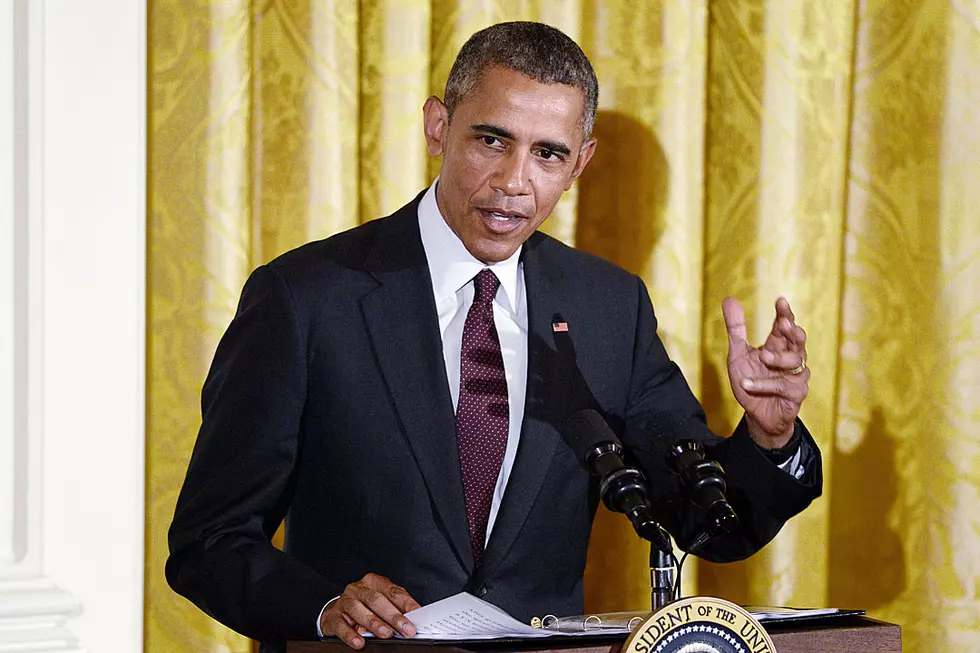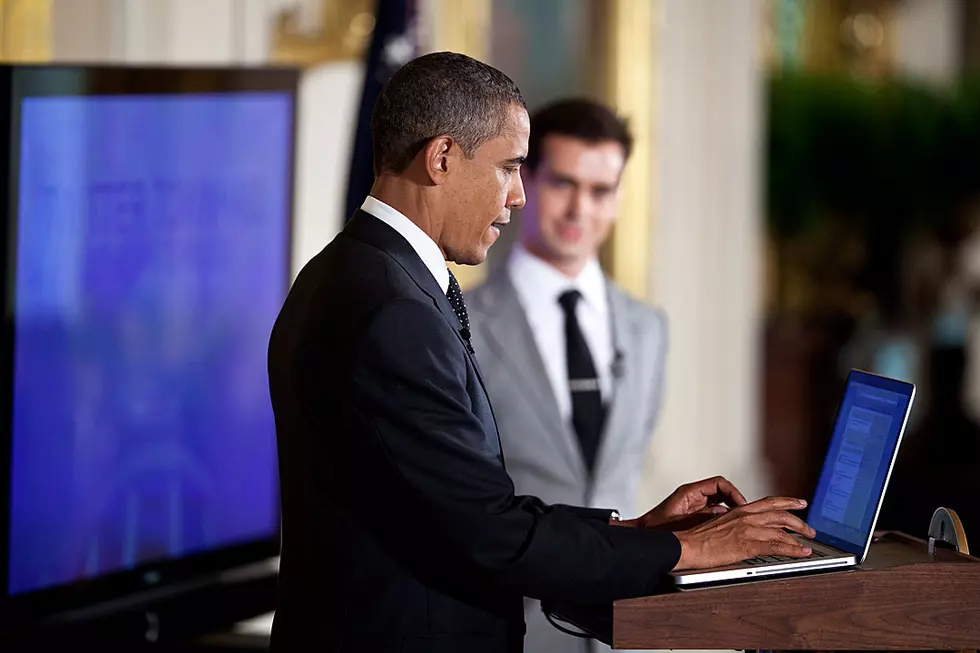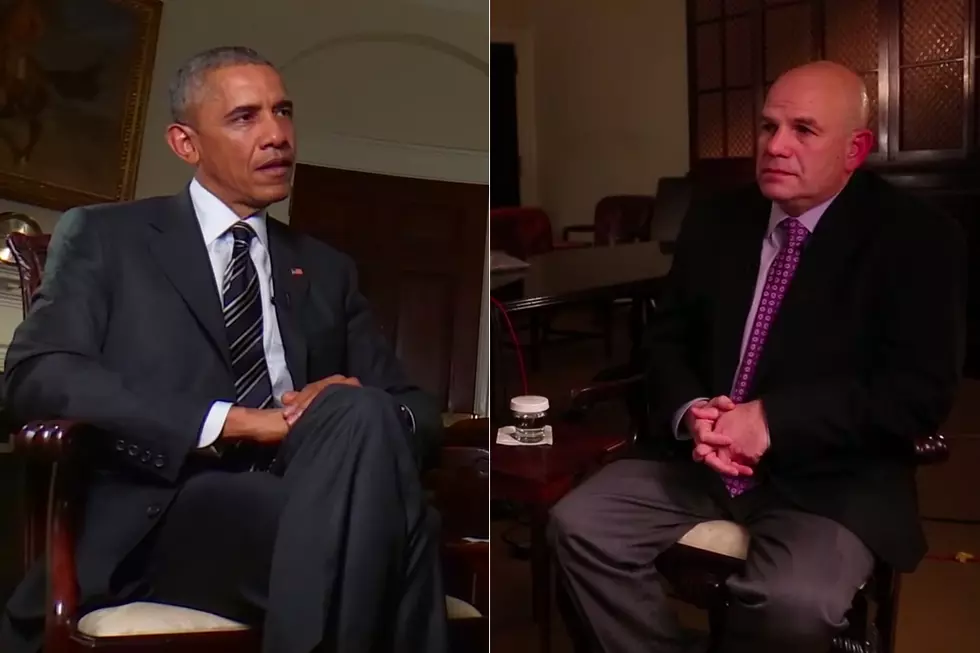
Who Chooses the Venue? — 10 Things You Might Not Know About the 2012 Presidential Debates
While everyone has a good time picking apart the presidential debates once they’re over (or while they're happening, on Twitter), they've actually been scrupulously picked apart by each campaign even before they start. These debates are serious business with a lot of rules, some of which are a bit strange and many of which no one seems to actually pay attention to.
Tonight is the final presidential debate between Barack Obama and Mitt Romney. Recently, the agreement between the candidates for this year’s debates was leaked to the public. We took a look and picked out a few that we found particularly intriguing:
The Commission on Presidential Debates Chooses the Venues, Makes the Rules
The first rule is that there is a Commission on Presidential Debates, which establishes the rules for Presidential debates. Its mission is to “ensure that debates, as a permanent part of every general election, provide the best possible information to viewers and listeners.” The commission was established by the two parties in 1987 to take control of the debates from the League of Women Voters, who used to sponsor the debates but grew dissatisfied when major-party candidates were making agreements to eliminate fringe candidates. The CPD selects the debate venues and moderators, as well. (Here's a look at the 2012 site-selection guidelines and which venues applied to host a debate.)
Candidates Are Not Allowed to Ask Each Other Questions
According to the 21-page memorandum, “the candidates may not ask each other direct questions during any of the four debates.” This rule was broken repeatedly in the second Obama-Romney debate. There is also a stipulation that “the candidates shall not address each other with proposed pledges,” meaning they can’t force each other to make promises.
The Moderator Can’t Comment or Ask Follow-Up Questions
Even though this didn’t seem to be the case on October 16, the memorandum states that during that debate the “moderator will not ask follow-up questions or comment on either the questions asked by the audience or the answers of the candidates during the debate.” Ms. Crowley was also prohibited from otherwise intervening in the debate other than to acknowledge the questioners from the audience or enforce the time limits. She was also permitted to invite candidate comments during the two-minute response period, but that was it.
Debating Candidates May Not Move
For two of the debates, the candidates are prohibited from moving from their assigned places. The CPD agreement says, “At no time during the October 3 First Presidential debate shall either candidate move from his designated area behind his respective podium. At no time during the October 22 Third Presidential debate shall either candidate move from his designated area seated behind the table.” In their second debate, they were permitted to move around, but only in “a pre-designated area” that cannot overlap the other candidate’s pre-designated area (another rule that both candidates dismissed).
No Props Are Allowed
The candidates are not allowed to bring “props, notes, charts, diagrams, or other writings or other tangible things.” This rule also includes portable electronic devices. They also can’t “reference or cite any specific individual sitting in a debate audience (other than family members) at any time during a debate.” If a candidate violates this part of the agreement, the punishment is merely that the moderator will interrupt and explain that a rule has been violated.
Podiums Must Be of a Specific Size, Height and Spacing
For the standing debates, just in case one candidate tries to appear bigger than the other candidate, there are specific rules about podium size. The podiums must be identical and “measure 50 inches from the stage floor to the outside top of the podium facing the audience and shall measure 48 inches from the stage floor to the top of the inside podium writing surface facing the respective candidates.” The podiums have to be without markings on the front and “no candidate shall be permitted to use risers or any other device to create an impression of elevated height.” They must be 10 feet apart and at an equal distance from the moderator's table.
Television Coverage Shall Not Include Cut-Away Shots of Candidates When Not Answering
In the list of rules covering staging, there are also specific instructions about how television networks can cover the debate. Despite the fact that, so far, the debate coverage has always included split-screen shots of candidates while they are not answering, the memorandum specifically states, “When a candidate is speaking, either in answering a question or making his closing statement, TV coverage will be limited to the best of the Commission’s ability to the candidate speaking. To the best of the Commission’s abilities, there will be no TV cut-aways to any candidate who is not responding to a question while another candidate is answering a question or to a candidate who is not giving a closing statement while another candidate is doing so.” Maybe they’ve been able to get past that rule by using the split screens instead of cutting away from the answering candidate completely.
Supporters Can’t Sit Together or Clap
A very detailed section about ticketing dictates that “the Commission shall allocate tickets to the campaigns in such a manner as to ensure that supporters of each candidate do not sit in a block and are interspersed with supporters for the other candidate and interspersed with tickets distributed by the Commission.” This shouldn’t be too big a deal since “all members of the debate audience will be instructed by the moderator before the debate goes on the air and by the moderator after the debate goes on the air not to applaud, speak, or otherwise participate in the debate by any means other than by silent observation.” So cheering sections aren’t allowed. Even the candidates’ family members have assigned seating.
Candidates’ Dressing Rooms Must Be Comparable
The CPD agreement contains a rule that states that each candidate is to have an adequately sized dressing room to “provide private seclusion for that candidate and adequate space for the staff the candidate desires to have in this area.” Of course, the two dressing rooms must be comparable in size, as well as in quality and proximity and access to the debate stage. There also has to be an equal amount of backstage space, either in rooms or trailers, for each candidate’s staff, and those rooms have to have equal, easy access to the provided media room.
The Temperature Must Be Appropriate
In true “never let them see you sweat” fashion, the CPD terms even include a rule about the temperature of the room. The rule simply states that “the Commission shall use best efforts to maintain an appropriate temperature as agreed to by the campaigns.” There’s no explanation as to what that temperature might be, but representatives of both campaigns are granted regular access to the debate venue, and that seems like a perfect opportunity to haggle over the thermostat setting.
More From AM 1050 KSIS









